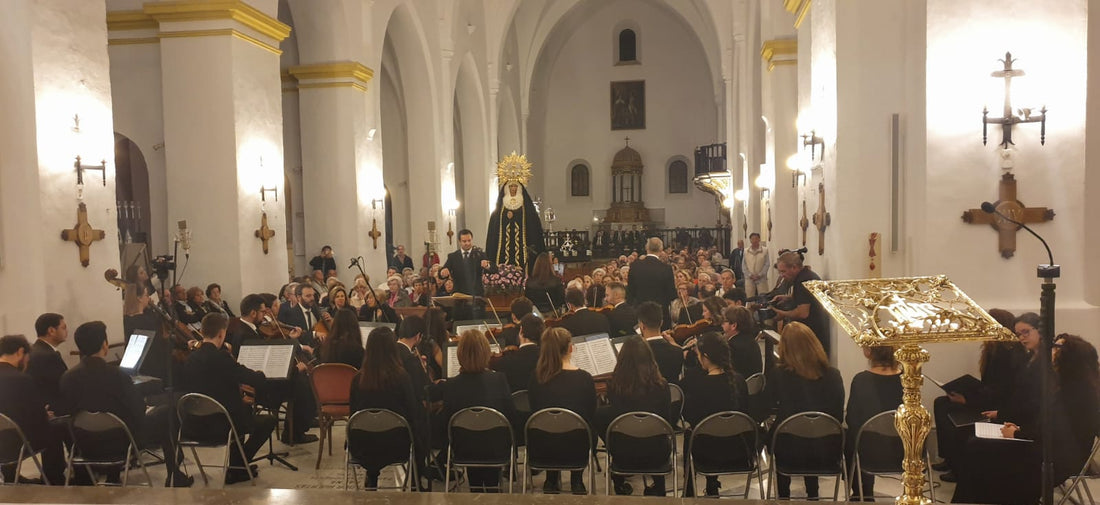
The King Baudouin Music Festival highlights the singing of the 'Stabat Mater' in the Main Church

El Faro – El Periódico de Motril and the Costa Tropical
Domingo A. López Fernández | 04.14.2019
On the night of Passion Friday, Dolores Friday, the solemnity of the song of the “Stabat Mater Dolorosa” was once again commemorated in Motril, a poetic composition made into music that transmits to the faithful the feeling that afflicts the Virgin Mary at the foot of the cross, a unique and very representative moment of our holy week. It has been more than two long centuries since the distinguished Motrileño Luis Antonio de Belluga y Moncada, Cardinal Belluga, instituted this song in the chapel erected at his expense for the devotion of Our Lady of Sorrows and with the ceremonial of the time it has been practiced. for years until the apathy of the times left it in disuse. Fortunately, for sixteen editions, the parish priest of the church of Our Lady of the Incarnation and the brotherhood of the Holy Sepulcher that resides there have managed to recover their validity, so that the lament of the Virgin Mary made into words and music has returned to life. spread their pitiful sounds between the ancient walls of the church.
For the second consecutive year, the singing of “Stabat Mater Dolorosa” has been part of the program of the twelfth “King Baudouin” sacred music festival, an event that is taking place in the main church between April 10 and 13. For this occasion, the city council has arranged the participation of the Iberian Sinfonietta orchestra, born precisely this same year in the town of Benalmádena with the sole objective of promoting classical music. At its head is Juan Paulo Gómez, its founder and musical director, who also holds the position of head of the Department of Composition and Direction of the Superior Conservatory of Music of the city of Malaga. Under his renowned criteria, it has been decided that the score that his orchestra will perform this year will be that of “Stabat Mater Hob. XXa:1” original by the Austrian composer Franz Joseph Haydn. An important novelty, without a doubt, since in previous editions it has been possible to enjoy versions by Enmanuele D'Astorga, Giovanni Battista Pergolesi or Antonio Vivaldi, among others, but never that of this brilliant musician who was Beethoven's teacher.
With a slight delay to the pre-scheduled time and in front of a temple materially packed with faithful, brotherhood brothers and music fans in general, the event began according to the protocol established by the governing board of the brotherhood of the Holy Sepulcher. Faithful to tradition, its Marian owner, Our Lady of Sorrows, was present next to what was the original door of the main temple on a simple litter carried by her traditional body of brother bearers. From here and to the sound of the music, she was carried with a solemn step through the main nave until she was placed next to the director of the orchestra, at which time the singing of the Stabat Mater Dolorosa began. Equally outstanding has been the artistic quality of the vocal performers who in this edition have performed the soprano Concepción Martos, the contralto Anna Gomá, the tenor Ángel Luis Molina and the baritone David Gascón. The Granada Chamber Choir, directed by Jorge Rodríguez Morata, participated alongside them, and also showed their good work in the role assigned to them in the event. Some interventions, therefore, of enormous quality that have far surpassed those of previous editions and in which that plaintive song that choral music dedicates to the Mother of the Son of God prostrated at the feet of the cross has once again been highlighted.
